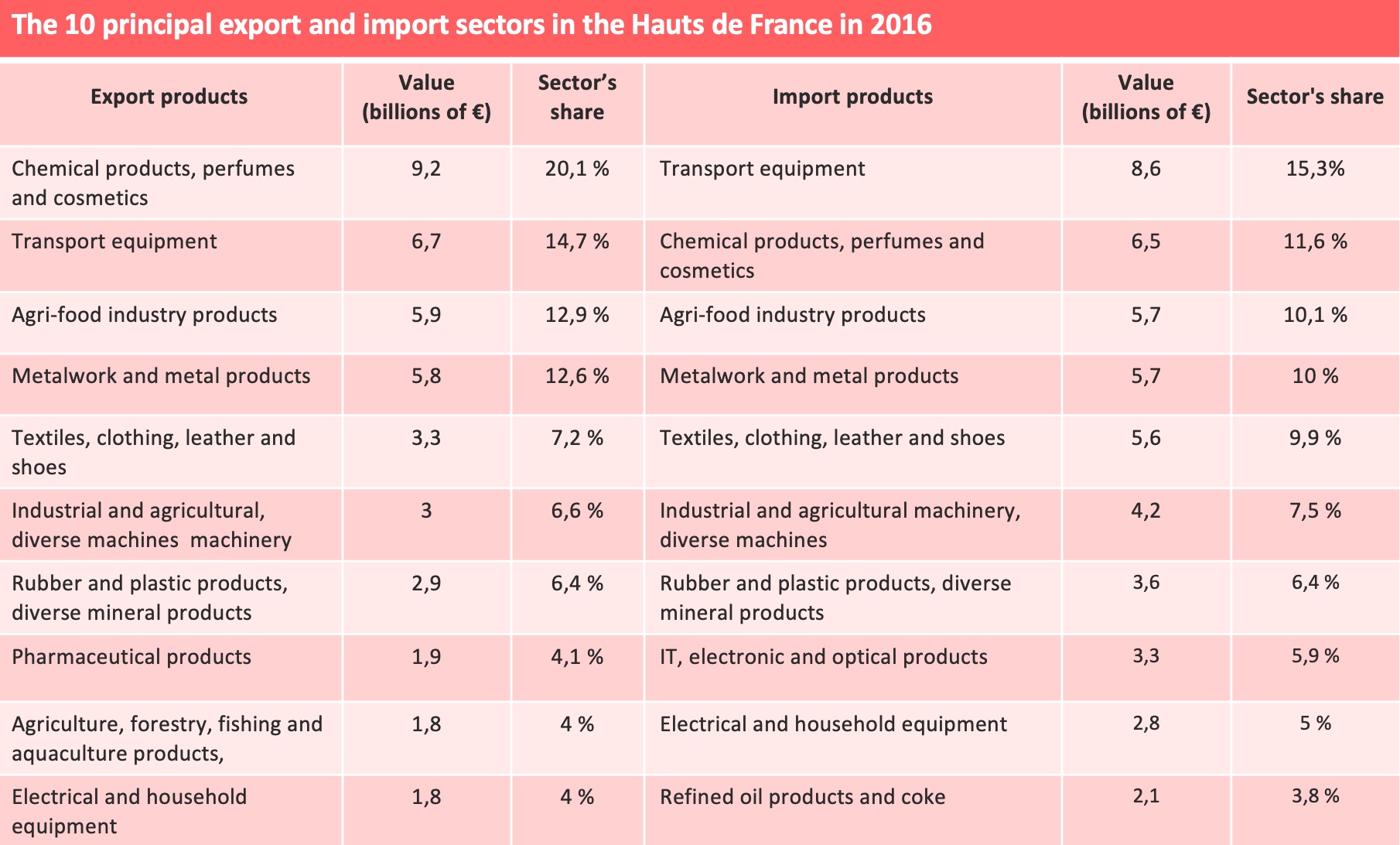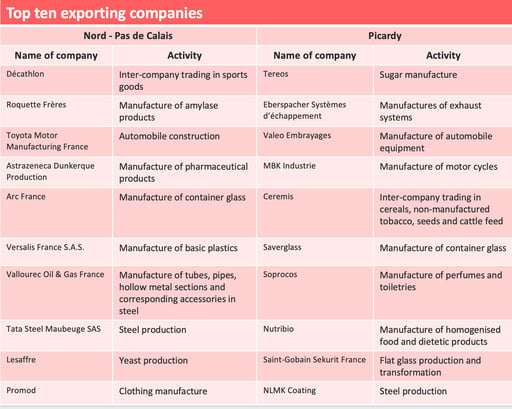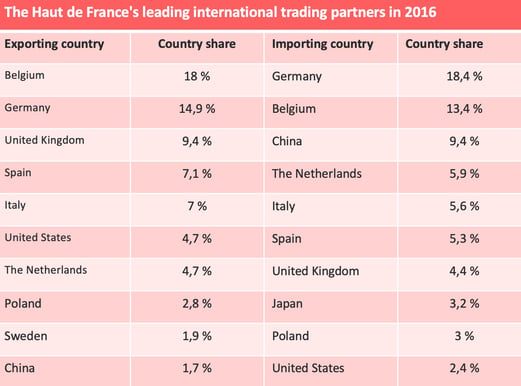
SPECIAL REPORT. As part of the launch of its road transport marketplace, Upply offers you a "Road Freight Transport Tour de France", taking in key economic activities, the main players and current issues. We start with a region which proclaims its logistics vocation loud and clear: Hauts de France. In this first article, we present a panorama of the regional economy. In the second, we will report on developments in road transport in the region in recent years.
"The region is pro-business and pro-logistics. I will be an advocate for this sector which provides and creates employment. Elected politicians need to have a positive view but we want industry players to help us." In this video message which he addressed to members of Union TLF (Transport et Logistique de France) at their annual general meeting last June, Xavier Bertrand, chairman of the Hauts de France region, once again gave a demonstration of the importance he attaches to the sector. Whether it be to defend major projects like the Canal Seine Nord, which has just been given the all-important backing of the European Commission after having for a time been threatened with cancellation, or to support road hauliers in their opposition to a possible revival of the proposed French "ecotaxe", Bertrand can be relied on to speak out.
A key crossroads
The Hauts de France region, which is the product of a merger between the Picardy and Nord-Pas de Calais regions, has the advantage of having an exceptional geographical position at the heart of trade with northern Europe and close to the Paris region. This position makes it a key crossroads even if the enlargement of the European Union towards the east has little by little moved Europe's centre of gravity.
The region is served by a good motorway infrastructure (A1, A29 and A16) but also by a good port system, with Dunkirk and Calais, notably serving the freight sector. As for the Channel Tunnel, which was inaugurated in 1994, it has become an essential point of passage for the flow of goods to and from the United Kingdom.
Another important asset for the development of transport and logistics activities: The Hauts de France region, which is France's third biggest by number of inhabitants, is both a zone of production and consumption, which generates relatively well-balanced traffic flows.
Transport and logistics: a network of small and medium-sized and foreign companies
This environment is favourable to the development of transport and logistics activities, which are often closely interlinked. The region has some 3,600 road transport companies, two thirds of them in the Nord-Pas de Calais and a third in Picardy.
Olivier Arrigault, Fédération Nationale des Transports Routiers (FNTR) regional delegate, draws attention to the particularly strong presence of small companies in the make-up of the regional road haulage sector. "The companies we questioned as part of the annual survey we carry out with the Bank of France had an average number of 51 employees and 42 vehicles. In reality, the region's potential has traditionally attracted the national transport sector leaders which have set up secondary establishments. This trend has been detrimental to the emergence of purely local leaders even if there are of course a few big companies like the Blondel group, which is based in Picardy and which has recently taken over Grimonprez."
Hauts de France is also characterised by the importance of transit and cabotage. "It is not just companies based in the region which drive on our roads," notes Stéphana Callari, secretary general of the Organisation des Transporteurs Routiers Europeen (OTRE) in Hauts de France. Apart from competition from the "traditional" foreign road transport companies, the region has also seen the mass arrival of light commercial vehicles, "which are not subject to tachograph regulations and generally turn out to be overloaded," Callari added.
Diversified flows
Several major industries structure the demand for transport in the Hauts de France, as is illustrated by the table showing the main import and export industries produced by the regional chamber of commerce and industry in its 2018 synthesis of the region's key figures.

NB : The 10 leading export operators represent 95,2% of all regional exports and the 10 leading import sectors account for 85.4% of all regional imports. Source : CCI Hauts-de-France / French customs.
The region is still heavily invested in industry. "The automobile sector and the rail industry have recently enjoyed several good years. On the other hand, certain areas of heavy industry, which were concentrated mainly in an area running from Valenciennes and Maubeuge to the Belgian border, have suffered great difficulties. We felt it through our membership. Transport companies have had to diversify and some, sadly, have disappeared," said Arrigault.
Less well represented than the Hauts de France in industry, Picardy is nevertheless served by a certain number of industries like glass and agri-food. In this latter industry, the region benefits from a strong presence in agricultural production, notably in sugar beet and potatoes, which feed transport flows in their own right.
The Hauts de France, of course, is also known for the presence of major retailers, with such names as Auchan and Decathlon long established in the region, as well as for logistics activities developed by new groups like Amazon which drive demand for transport.
Taking all branches of the sector together, the Hauts de France enjoys a logistics ecosystem which is quite dense, thanks to its advantageous geographical position. According to the l’Atlas des entrepôts et des aires logistiques produced in 2015 by the Ministry of Transport's observation and statistics service, the region had 630 warehouses and logistics platforms measuring more than 5,000 m², with an average surface area of 20,100 m². The latest figures available show that this success is not flagging. At more than a million square meters, logistics property development represents nearly a third of floor space authorised for construction in 2018, an increase of 25.3% on the previous year. "This activity is concentrated particularly in the Lens-Henin, Arras and Amiens employment areas," French statistics institute INSEE said in its 2018 regional economic review.
The Hauts de France economy is also driven by its coastal activities, with the ports of Dunkirk and Calais feeding transport flows linked to imports and exports and Boulogne-sur-Mer in the fishing industry.
Activity driven by the major groups
The Hauts de France's major industries are generally driven by big industrial and/or international groups. Exports are particularly influenced by the presence of these groups, according to the chamber of commerce and industry. It is a fact that traffic flows are driven by major names like Décathlon, Promod, Toyota, Arc and Saint-Gobain.

Source : CCI Hauts-de-France / French customs
Germany and Belgium leading international trading partners
Apart from traffic flows within France itself, the region's principal trading partners are European, led by Germany and Belgium.

Source : CCI Hauts-de-France / French customs
The Hauts de France region in figures :
- 31,814 km²
- 3,808 districts
- 6 million inhabitants (9.4% of the French population, third biggest region)
- GDP €150 billion (7.2% of national GDP, fourth biggest regional GDP)
- About 3,600 road freight transport companies (2/3 in the Nord-Pas de Calais and 1/3 in Picardy)
- 5th biggest French exporting region and 2nd biggest importing region in 2016
Our latest articles
-
Subscriber 2 min 19/12/2025Lire l'article -
Container shipping in 2025
Lire l'article -
Air cargo: the rerouting of flows is confirmed
Lire l'article



